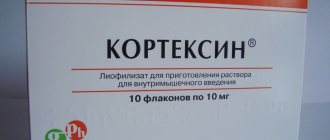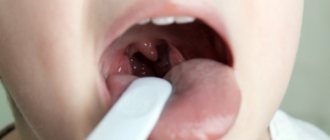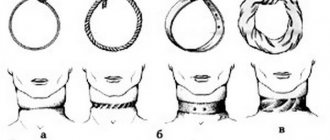The ICP monitoring system allows you to conduct a primary screening study of intracranial pressure in newborns and children under 1 year of age in a non-invasive way and see ICP numbers on the screen of a bedside monitor. Includes ICP sensor, amplifier (signal decoder), cable for connection to a bedside monitor (custom made), 2 calibration kits, instructions and recommendations for clinical use. The system is calibrated at the interface between water and air and is intended for reusable use. The measurement error is 2-3 mmHg, due to the anatomy and principle of the study. Considering that the measurement is carried out without a high potential risk for a small patient (non-invasively), the results are interpreted as screening and allow one to assess the risks of developing complications of increased intracranial pressure. For example, if a child’s ICP figures are 20-25 mmHg. and higher, then the existing measurement error can be neglected, since the zero drift is 2-3 mmHg. Art. in such conditions it has no clinical significance; urgent measures are required to reduce intracranial pressure in the child. The measurement error of ICP monitors designed for invasive ICP measurement through the burr hole or subdural ranges from 1 to 2 mmHg. (depending on the brand of monitor).
Currently, this technique is successfully used in the Russian Federation and the CIS and is available for both public health facilities and private clinics. The system can be used both in a hospital and on an outpatient basis. The system is manufactured in the UK.
What is increased intracranial pressure?
Inside the brain there is a system of interconnected ventricles, which are also filled with cerebrospinal fluid (CSF). This protects the human brain from injuries, concussions, as much as possible. The pressure of cerebrospinal fluid on brain structures is called intracranial pressure. Exceeding the permissible norms entails a number of consequences.
The main question for parents is what are the signs of intracranial pressure in a child, and what threat does this pose to the child?
What complications can there be in children? If left untreated, increased intracranial pressure can lead to the following consequences: the occurrence of epileptic syndrome, blurred vision, mental disorders, strokes, disorders of consciousness, breathing problems, weakness in the limbs, etc.
What should parents of a child with this diagnosis know? ICP is not a disease, but only a symptom, a consequence of various diseases. There are several misconceptions among parents regarding increased intracranial pressure. For example, the fact that this is an incurable condition. However, with timely treatment, the child’s recovery is possible. The main thing that needs to be done is to consult a specialist in time and follow the doctor’s instructions.
ICH treatment tactics
When ICH syndrome is detected, therapy is carried out under medical supervision. The need for inpatient treatment is due to the fact that intracranial hypertension is not an autonomous disease, but acts as a sign of another pathological process (hydrocephalus or encephalopathy). Therefore, doctors need to find the root cause of this abnormality.
Therapy of intracranial hypertension in one-year-old children is carried out using several methods, based on the severity of the pathology.
For mild to moderate severity of the disease, non-drug and drug therapy is practiced:
- With a non-drug approach, it is recommended: diet, massage, physiotherapy, therapeutic exercises.
- With regular surges in intracranial pressure, medications are prescribed whose action is aimed at stopping the etiological factor. Additionally, one or more types of diuretics are prescribed.
At the same time, a number of therapeutic measures are carried out to significantly improve the baby’s well-being and prevent the development of complications.
Drastic treatment methods are also practiced in advanced stages of intracranial hypotension or the presence of a malignant focus, when the use of conservative measures is no longer advisable.
Symptoms of increased intracranial pressure
Increased intracranial pressure in children, symptoms of which can appear in the first minutes and hours after birth, often leads to the development of serious complications.
When parents may suspect something is wrong:
In young children:
- The baby constantly cries and does not calm down;
- Lack of thirst in the child, reluctance to drink;
- The baby is irritated by bright lights and sharp sounds;
- The child burps frequently and profusely;
- The baby's fontanel bulges;
- The baby's chin is shaking;
- Rapid head growth (this is due to stagnation of venous blood);
- The child throws his head back.
In older children
- Severe headaches;
- Nausea, vomiting;
- Increased fatigue, weakness;
- Drowsiness;
- Tearfulness, irritability;
- Apathy;
- Double vision.
Knowing the key signs of the disease, you can establish the correct diagnosis in the early stages and prescribe the correct treatment for your child. Even if you have only one of the listed symptoms, you need to immediately contact a neurologist! The sooner your baby receives help, the fewer consequences it will have for the child’s body in the future.
Clinical picture (symptoms)
With arterial hypertension, the manifestations are different and depend on the severity. With moderate high blood pressure, there may be no symptoms, but rarely the child experiences headaches, fatigue, and excessive irritability. A significant increase in blood pressure is accompanied by:
- anxiety;
- unmotivated crying;
- apnea attacks;
- shortness of breath.
Pulmonary hypertension manifests itself:
- heavy breathing of the child;
- retracting the pliable parts of the chest while inhaling;
- reduced saturation (saturation of hemoglobin with oxygen);
- cyanosis of the skin and mucous membranes.
With increased pressure in the pulmonary arteries, the child’s response to oxygen therapy is practically absent, which is why the procedure is ineffective.
Among the clinical manifestations of intracranial high pressure :
- decreased sucking activity;
- tense, swollen fontanelles that lack pulsation;
- dilated superficial veins of the head area;
- unmotivated crying, screaming;
- convulsions;
- divergent cranial sutures;
- damage to the cranial nerves, which is accompanied by impaired motor functions of the eyeball, sense of smell, work of the cervical, facial and trapezius muscles, heart, gastrointestinal tract and many other systems.
Also, the newborn develops Graefe syndrome, in which part of the sclera can be seen at the top of the eyeball. The phenomenon is observed only when the child’s eyes are downcast.
Diagnosis of intracranial pressure
Before prescribing treatment for your child, we perform a comprehensive neurological examination. It includes:
- Collecting anamnesis (conversation with the mother, studying the child’s medical record, history of pregnancy and childbirth and the results of previous studies);
- special neurological tests;
- active and muscle tests;
- reflex diagnostics;
- local palpation examination of the spine and musculoskeletal system.
In addition to the main examination, if necessary, the doctor may prescribe:
- NSG (neurosonography, ultrasound of the brain);
- MRI;
- Ultrasound;
- X-ray;
- Lab tests;
- EEG;
What complications can there be?
If not treated in a timely manner, complications may develop that are much more dangerous to health than ischemic heart disease. The child may suffer from developmental delays. Pathology associated with increased intracranial pressure is rare. However, such children often lag behind in development compared to their peers.
With advanced hydrocephalus, there is an increased risk of brain damage. There may be a physical disability. However, this does not mean that a person cannot lead a normal life. A proper cleaning system is important.
In the absence of qualified help, the child will suffer from headaches at an early age. Psychomotor skills are impaired, the emotional state is unstable.
Prevention
To prevent coronary heart disease in young children, constant walks in the fresh air are recommended. This normalizes the baby's emotional state. In addition, the correct amount of oxygen has a positive effect on the condition of the spinal cord.
The child should be given a complete vitamin complex. This is especially difficult if the child is bottle-fed. Remember that your baby is sensitive to any loud noise. Therefore, the atmosphere should be calm.
In the case of baby hips, there is no need to panic. This disorder can be controlled with appropriate treatment. However, you should not try to deal with this problem on your own. It is also important to pay attention not only to clinical signs, but also to changes in the child’s behavior and mood.
In most cases, the problem can be detected at home. Then it’s worth getting diagnosed yourself at the clinic. The possibility of hospitalization cannot be ruled out. Home treatment is not as effective.
Treatment of intracranial pressure
To treat our little patients, we use only painless, gentle treatment methods that do not cause discomfort to the baby.
We use methods:
- Transcranial micropolarization (TCMP) is the effect of a low-power direct electric current (less than 1 mA) on brain tissue in order to activate individual brain centers (speech, motor, psychomotor, etc.);
- Manual therapy;
- Osteopathy - treatment by the hands of a doctor, a gentle effect on the musculoskeletal system, nervous and vascular systems, internal organs;
- Acupuncture - exposure to biologically active points with microneedles;
- Pharmacopuncture - the introduction of medicinal drugs of natural origin to the source of the problem;
- Isometric kinesiotherapy - individual gymnastic techniques/exercises, according to indications, with elements of joint massage;
- Isometric kinesiotherapy using the Exart installation;
- Ozone therapy - treatment with active oxygen;
- Physiotherapy;
- Physiotherapy with enzyme preparations;
- Medical massage;
- Therapeutic droppers;
- Hirudotherapy - treatment with leeches;
- Botulinum therapy - treatment with botulinum toxin;
- Tsubotherapy is a gentle effect on the reflex points of the body.
Remember that with increased intracranial pressure in children, treatment should be comprehensive, individual and under the supervision of a doctor.
Diagnostics
Before starting therapy, the underlying disease should be identified.
If there is an infection, antibiotics should be given first. If there are problems with the circulation of cerebrospinal fluid, a completely different treatment is used.
It is important to clearly understand the underlying problem.
Based on these data, specialists determine the violation of coronary artery disease in an infant:
- is there hyperemia of the optic nerve head;
- Is there venous outflow?
Computed tomography is performed regardless of age. However, for infants, ultrasound of the skull through the fontanel is still recommended. Sometimes a needle with a pressure gauge is inserted into the spinal canal. However, in this case, the qualifications of the doctor are extremely important.
The risk is high, so this procedure has not been performed on children in recent years.
It is important to visit a pediatric neurologist. In children, an MRI or CT scan is mandatory.
Diseases caused by increased intracranial pressure
Our pediatric neurology department will help you not only make a correct diagnosis, but also undergo a course of treatment if your child has:
- Hyperactivity (attention deficit hyperactivity disorder, ADHD);
- Cerebral palsy (cerebral palsy);
- Autism;
- Delayed psychomotor development;
- Delayed speech development;
- Speech defects;
- Stuttering;
- Nervous tics;
- Enuresis;
- Sleep disturbances (sleeps poorly, sleeps little, wakes up frequently, does not fall asleep for a long time);
- Hypertonicity;
- Pyramid syndrome (pyramidal insufficiency syndrome);
- Hypertensive syndrome;
- Hydrocephalus (hydrocephalic syndrome, dropsy of the brain);
- Perinatal encephalopathy (perinatal damage to the central nervous system, PEP, PPCNS);
- Minimal brain dysfunction (MCD).
Causes of intracranial pressure:
- Birth or traumatic brain injury;
- Prematurity, pathologies during pregnancy or childbirth;
- Untimely fusion of the skull bones in a child;
- Benign brain tumors, which lead to increased blood pressure and changes in brain structures;
- Malignant brain tumors;
- Meningitis;
- Encephalitis;
- Toxic cerebral edema;
- Hydrocephalus;
- Genetic abnormalities and defects of the cerebrospinal fluid tract;
- Traumatic brain injury;
- Intracerebral hemorrhage.
What can cause brain pathologies?
The main cause of ICP in infants is hydrocephalus, which occurs due to increased production of cerebrospinal fluid.
As a result, excess fluid accumulates in various parts of the brain, disrupting the normal patency and absorption of cerebrospinal fluid. Typically, hydrocephalus in the fetus begins to develop in the last months of a woman’s pregnancy. Symptoms of this congenital disease can be detected immediately after birth. If treatment is started in a timely manner, there is every chance that the child’s cranial pressure will soon return to normal.
There are cases when cranial pressure in an infant increases gradually, the reason for this may be:
- a genetic or chromosomal disorder that causes congenital neurological defects;
- very early birth, when the child’s cerebral cortex has not yet fully formed;
- difficult pregnancy with pathologies;
- intrauterine infectious disease transmitted to the child from the mother;
- birth injuries to the head or concussion.
Among the diseases accompanied by the development of ICP, the most common are:
- encephalopathy and hydrocephalus;
- neuroinfectious diseases (meningitis, encephalitis, etc.);
- severe disturbance of metabolic processes in the body, leading to diabetes mellitus and hypothyroidism;
- brain tumor.






